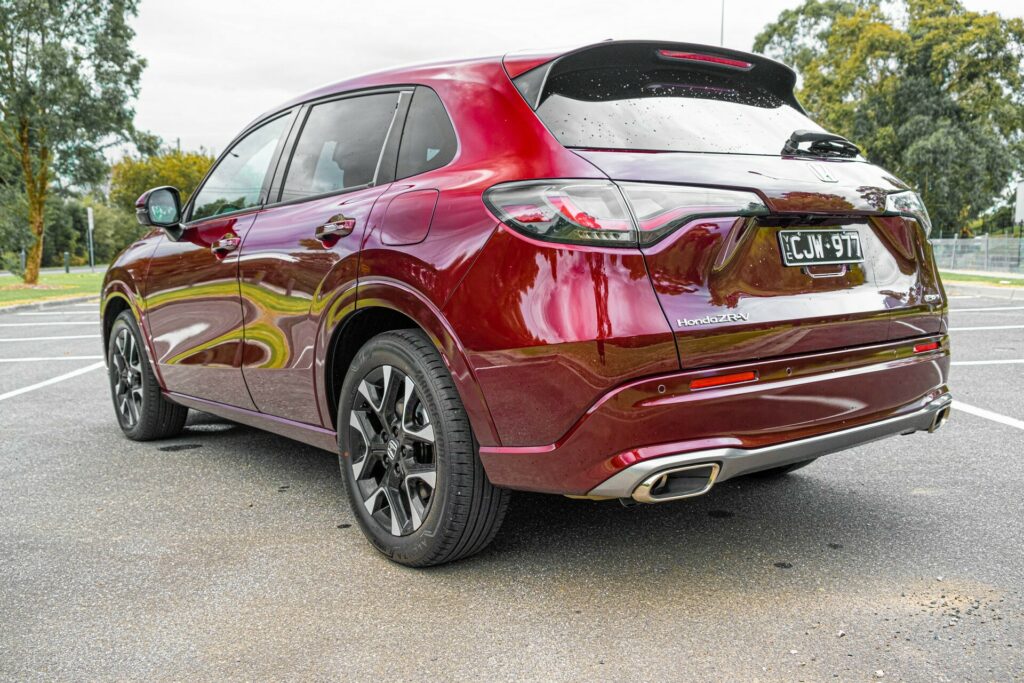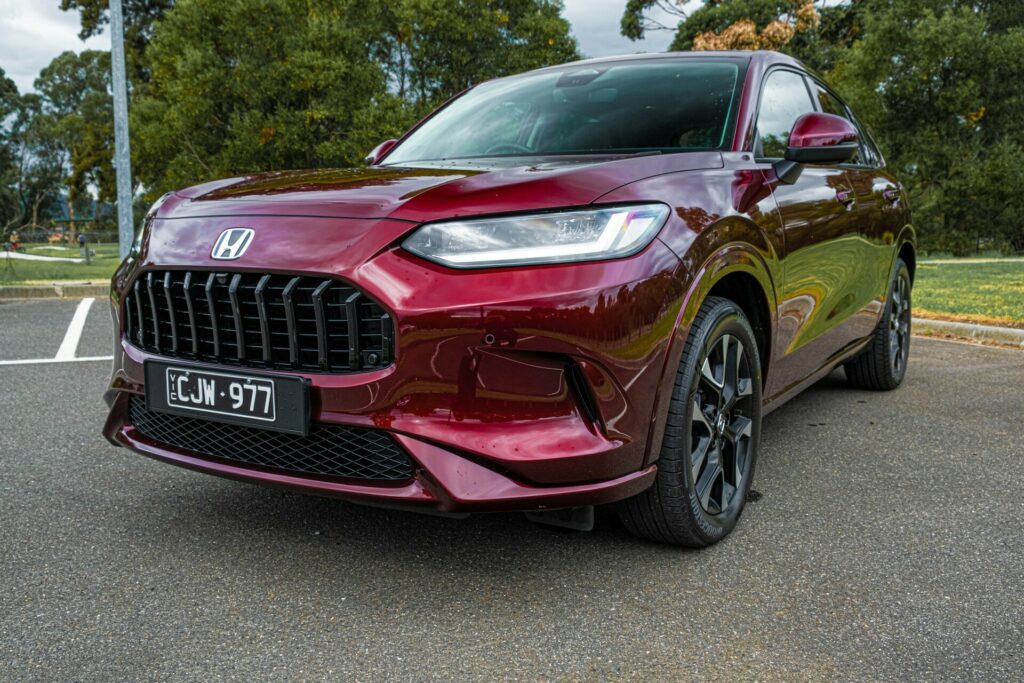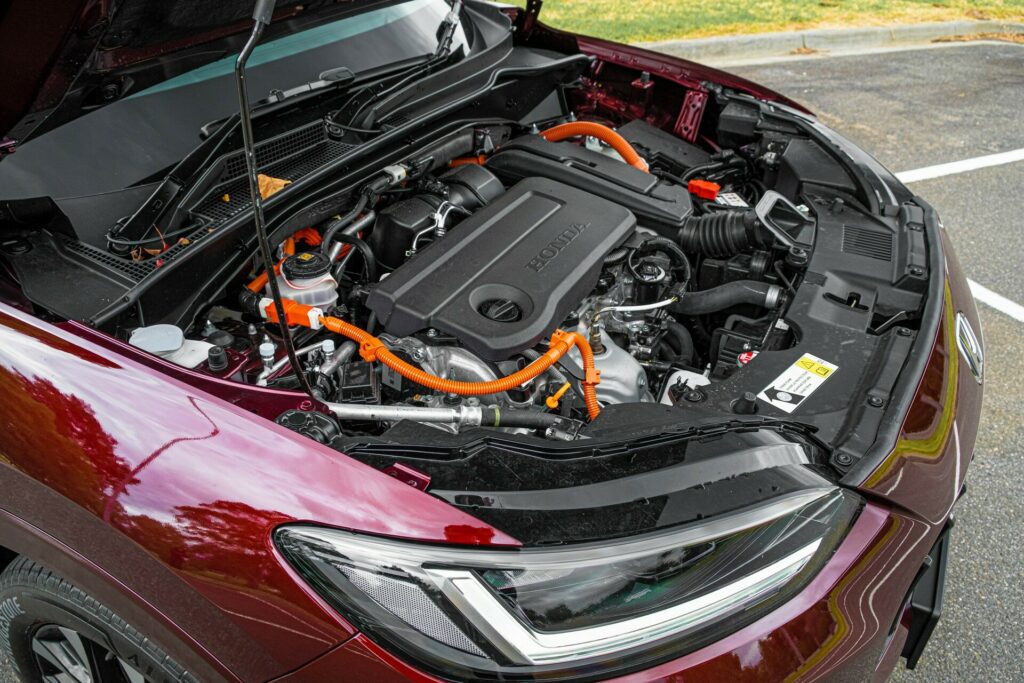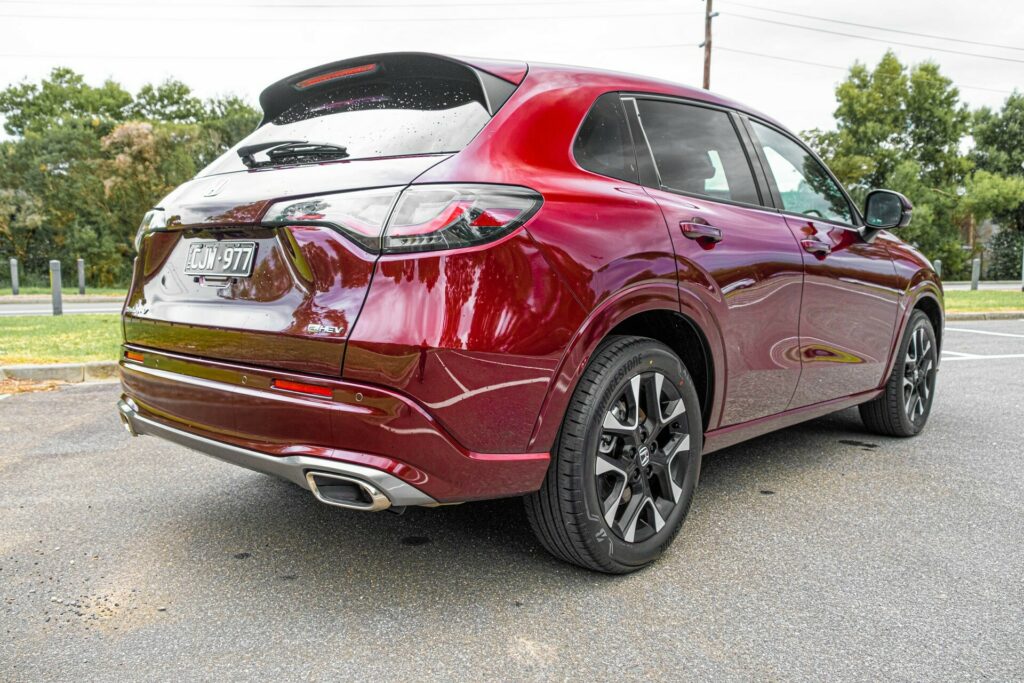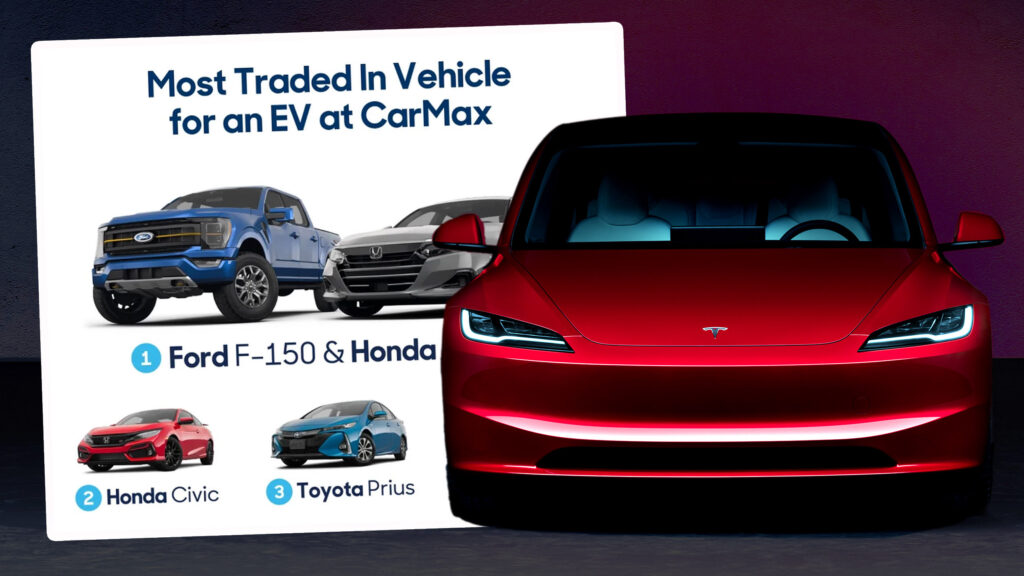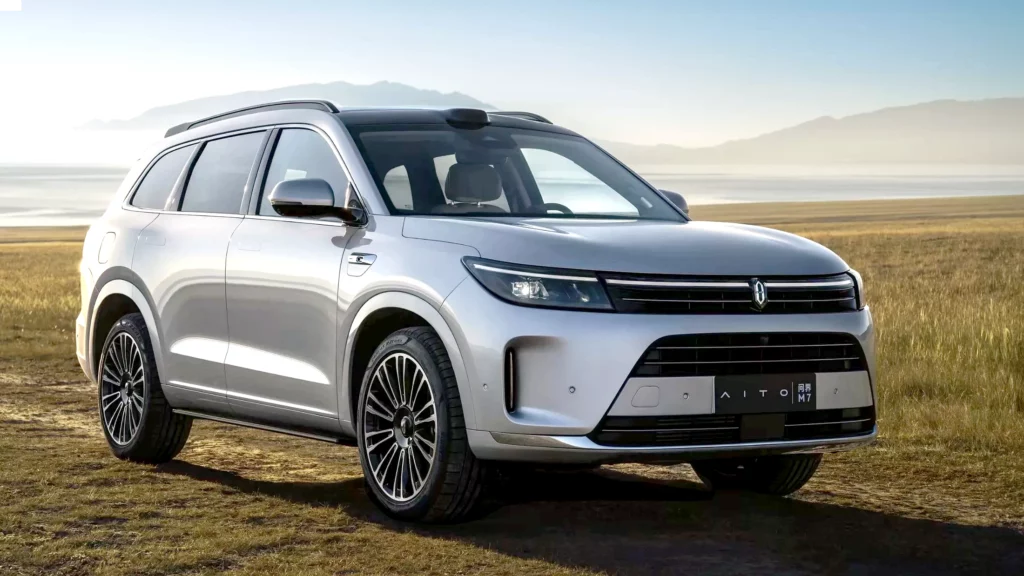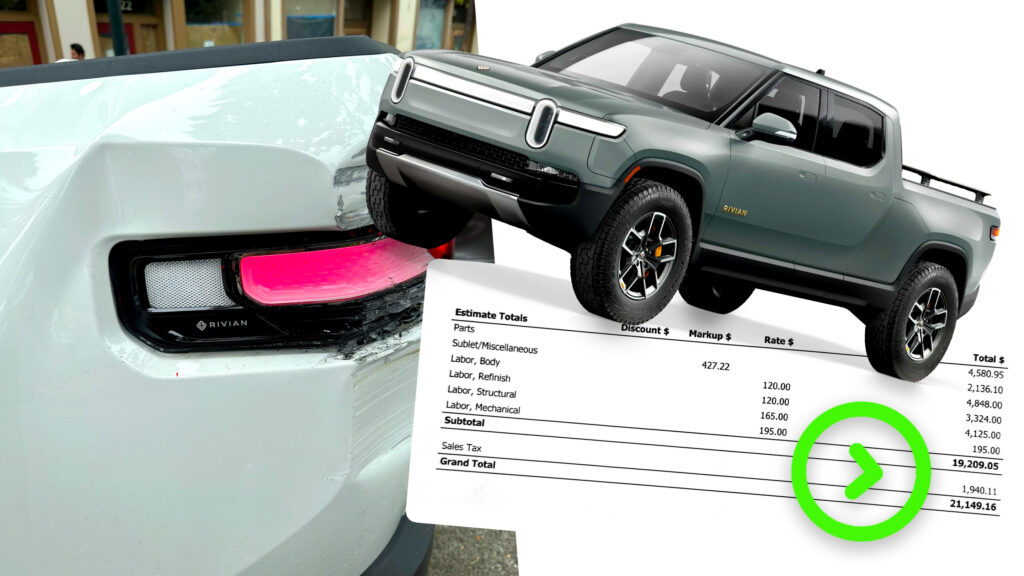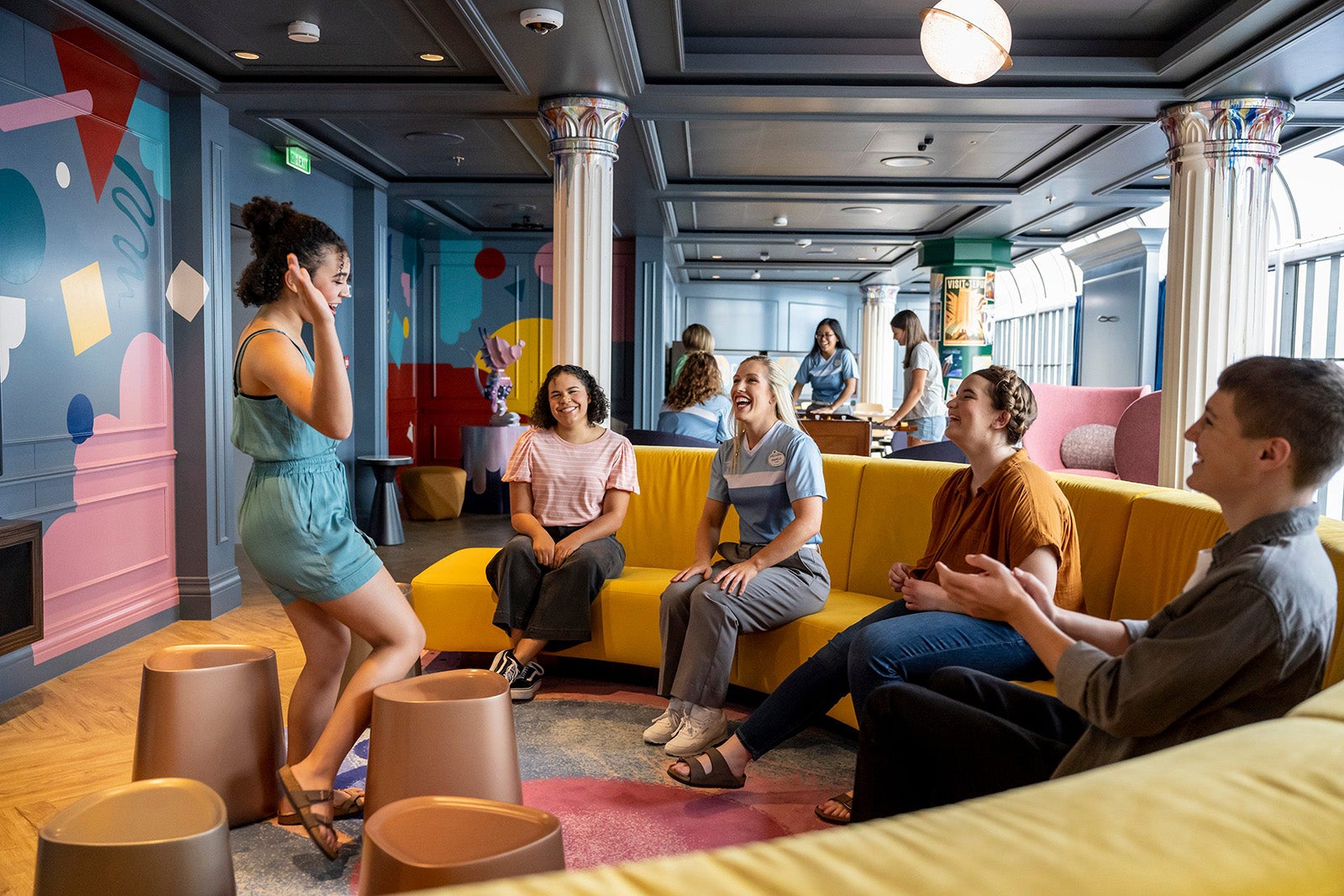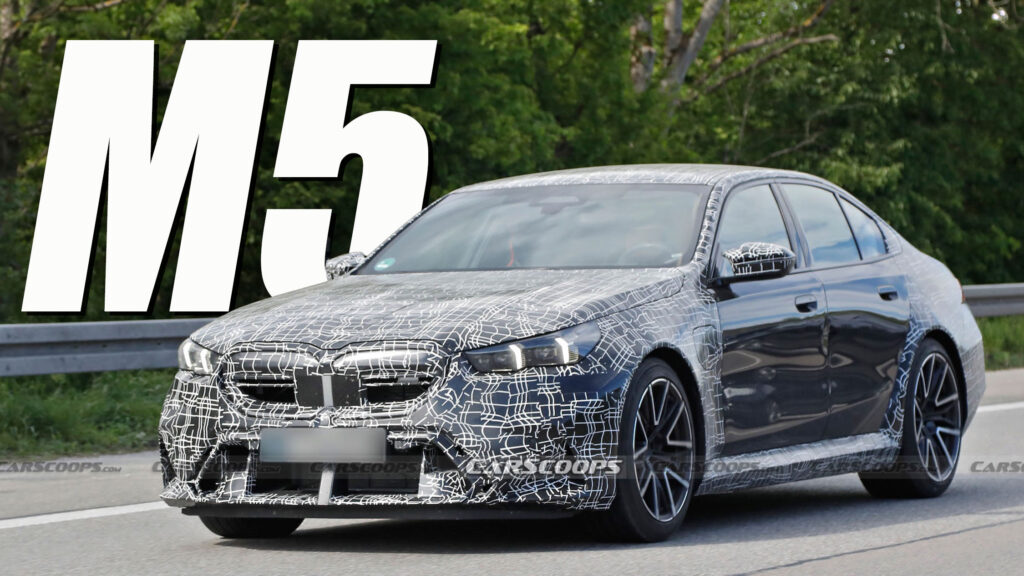The Points Guy
With ever-growing cruise ship capacity, car traffic, hotel development, jet fuel, food waste and suitcases full of fast fashion, it’s safe to say that travel and tourism take a significant toll on the environment. And the numbers don’t lie: 8% to 10% of annual global greenhouse gas emissions were a direct result of the travel industry in 2021, according to the World Travel & Tourism Council. Some studies put it closer to 12%, now.
Given that the positive effects travel has on society are well demonstrated, too — and given that we, here at TPG, love travel — we’re not suggesting skipping out on well-earned vacations. Rather, we’re advocating traveling smarter, starting with booking more sustainable hotels. These days, accommodations of all types, from off-grid glamping spots to luxury resorts with spas, pickleball courts and infinity pools, are making it easy to make your getaway a bit more earth-friendly.
Related: 11 sustainable travel accessories to buy in honor of Earth Day
Here are 14 hotels that go so much further than in-room recycling bins. Think on-site composting, solar energy, turtle releases, apiaries, monthly beach clean-ups, zero-waste menus, invasive species removal, biophilic design, coral nurseries and shower timers.
Coulibri Ridge: Soufriere, Dominica
COULIBRI RIDGE
A masterclass in maximizing surroundings to minimize the impact on the environment — without sacrificing luxury — seemingly every inch of the 285-acre Coulibri Ridge, the brainchild of late founders Daniel Langlois and Dominique Marchand, has a sustainable origin or purpose, down to the stone quarried from within the compound and hand-chiseled by only local laborers, the recycled wood and aluminum, the slants of the rooftops and the angle at which the buildings were placed on a lush hillside of the Caribbean isle. The latter was chosen to soak up the most hours of sunlight with solar panels as well as optimize rainfall capture to power the Beyond Green member’s 14 suites, two restaurants, a spa, conference rooms, an office and heated pools. And speaking of pools, minimal chlorine is used because the water is purified using copper ionization.
Two wind turbines, in a shape believed to reduce the impact on birds and bats, also power this off-grid nirvana. The walkways, terraces and stairs collect rainwater, which is used for landscaping and Coulibri’s farm, which provides 20% of the produce used on the property for nice touches, including daily fresh-squeezed juice, in-room fruit baskets and regional treats like guava cheese. Another 60% is sourced on the island. The dining rooms refrain from serving red meat or non-locally caught fish, and everything is composted. Guests are even invited to get in on that action with countertop collection bins in the ensuite kitchen and reusable Keurig K-cups.
Rates at Coulibri Ridge start at $700 and include breakfast. I Prefer Hotel Rewards members receive a discounted rate and other benefits, including free Wi-Fi and complimentary room upgrades.
1 Hotel San Francisco: San Francisco
1 HOTEL SAN FRANCISCO/FACEBOOK
Even city hotels are leveling up their pro-planet game. Take this newish 200-room San Francisco treat on the Embarcadero waterfront. Driftwood sculptures, handwoven rugs, a lobby floor made from 7,000 square feet of reclaimed barn wood, elevator landings built out of salvaged Bay Bridge redwood, “do not disturb” stones and a ceiling composed of preserved plants are easy on both the eyes and the environment.
Rooms are full of sustainable details, from the wooden keycards and drinkware made from recycled wine bottles to five-minute shower timers to keep bathers mindful of the Golden State’s recurrent drought. Low-flow plumbing and infrared HVAC systems that shut off when occupants aren’t present don’t add to the aesthetic but are still important. The 1 Less Thing initiative motivates guests to leave behind gently used clothing for donation to a regional charity.
The same goes for the farm-to-table restaurant Terrene, where the chef prioritizes organic and seasonal goods from purveyors within 100 miles of Highway 1. He even grows his own greens in a rooftop garden with beehives. Not to be outdone, the beverage director narrows the ingredient field to within 50 miles and uses citrus scraps and spent coffee grounds to infuse spirits and garnish glasses.
The starting room rate at 1 Hotel San Francisco is $325 a night.
Fairmont Mayakoba: Playa del Carmen, Mexico
FAIRMONT MAYAKOBA, RIVIERA MAYA/FACEBOOK
Margaritas, mariachis, Mexican food, massages, Mayan ruins, mysterious cenotes! You can have all the usual (and beloved) trappings of a Riviera Maya vacation while simultaneously making a difference by staying at the sprawling Fairmont Mayakoba, a 594-acre, 401-key community plopped in the middle of a mangrove jungle and on the sandy shores of the aquamarine Caribbean.
At the corporate level, both Fairmont and parent company Accor were early adopters of sustainable building and operations and have committed to achieving net zero carbon emissions by 2050. The success of sustainability initiatives, such as installing air conditioning that cuts off when doors aren’t closed properly or providing reusable water bottles and filtered water, is vouched for by the numerous certifications they’ve earned from organizations like Preferred by Nature, PROFEPA (Mexico’s version of the Environmental Protection Agency) and Spain’s Green Building Council.
More interesting are the moves being made at the local level. The resort, which features multiple pools, crystal-themed cocktails at a rooftop bar, outdoor yoga classes and boat tours along its meandering wildlife-filled waterways, began collaborating with Oceanus in 2015 on a coral reef restoration. Snorkeling excursions take guests to see the three nurseries. The annual Reef Week kicks the education element up a notch with daily talks with biologists working on resuscitating reefs. Following the ideals of the Slow Food and KM 0 movements, the restaurants source as much as they can from ecological producers within a 100-mile radius.
Keeping bees is also a Fairmont brand standard, and Mayakoba has three hives in its care, including one at the recently revamped spa. But they aren’t just any ol’ bees. Melipona bees are minuscule, stingless and endangered vital pollinators believed to be sacred by the Mayans. Visit them between munching on vegan bites, a copal cleanse and a sweat session in the temazcal.
Rates at the Fairmont Mayakoba, which belongs to the ALL — Accor Live Limitless loyalty program, start at $499 per night.
Vermejo: Colfax County, New Mexico
Ted’s Suite. JEN JUDGE/VERMEJO, A TED TURNER RESERVE
Vermejo — a 550,000-acre collection of pinon pine forests, snowcapped mountains, streams, picturesque meadows (inhabited by 1,200 of the most genetically pure bison in the world) and 19 fishable lakes — is one of three Ted Turner Reserves with lodging in the Land of Enchantment on a mission to “save everything,” as the ubiquitous branded merchandise in the gift shop will remind you. In almost three decades under the former media mogul’s stewardship and that of his charitable foundations, the rugged retreat (which is 45 minutes away from the closest town) is off to a good start with too many pro-environment programs to name here (including ecological preservation, habitat restoration, native species reintroduction and wildlife protection). Many pertain to returning the former cattle ranch to its natural bucolic splendor via sustainable methods like designing water-smart roadways, removing fencing to promote animal migration, stopping river bank erosion, building riparian enclosures to aid vegetation recovery, and managing the number of large ungulates and grazers to align with the landscape carrying capacity.
To achieve its biggest goal — encouraging guests to care deeply about nature by immersing them in it — Vermejo offers wildlife safaris, horseback riding, bike and UTV adventures, fishing, and hunting. There’s a scenic conservation-themed tour that gives you a closer look at the scientific studies and restorations and the opportunity to build the aforementioned enclosures. Once back at the main hub of hospitality, kids make crafts with found objects or ice cream using only hand power. Foodies tour the greenhouse to learn about growing techniques like using old beer and potatoes as pest control and get a sneak peek at what might appear on that night’s menu alongside the freshly caught Rio Grande cutthroat trout or bison fillet. To go farther into the wild, bunk at the more remote LEED Silver certified Costilla Fishing Lodge or the new hike-in Bernal Lake cabin with a gas fireplace and outdoor cedar soaking tub.
Rates at Vermejo start at $1,650 per night with a two-night minimum and include accommodations, meals and all activities.
Hotel Marcel: New Haven, Connecticut
HOTEL MARCEL/FACEBOOK
The former Armstrong Rubber Company headquarters, a 1970s masterpiece by Bauhaus architect Marcel Breuer, has been reimagined as a climate-crusading member of the Tapestry Collection by Hilton. Creatively reusing an existing office building means less need for new materials and less construction impact on the land and air. The 165-room concrete giant has racked up a number of accreditations in its first two years of operation, including being the nation’s first Passive House-approved hotel (PH rates air tightness and energy consumption) and one of only 10 U.S. hotels to score LEED Platinum certification. The all-electric, fossil fuel-free spot is awaiting a net zero recognition as well.
Hotel Marcel’s solar panel array and microgrid power the efficient electric internal systems (i.e., heat and air conditioning, water heating, and laundry) as well as 24 electric vehicle-charging stations and the all-electric induction kitchen for its all-day eatery, BLDG, and event catering. No single-use plastics are used in either food-and-beverage output (or the caramel-and-sky-blue midcentury modern rooms, for that matter). To make her Latin, Italian and steakhouse specialties, the chef sources ingredients from within 250 miles, changes the menu seasonally and composts the leftovers. When it’s time for goodbyes, an electric shuttle will zip you back to the airport.
Hotel Marcel‘s starting rate is $135 a night. Hilton Honors members can book with 44,000 points per night.
Vida Cayman: Grand Cayman, Cayman Islands
VIDA CAYMAN/FACEBOOK
Just opened in March, this property in West Bay has already proven that getting some R&R in paradise can be both planet-positive and exceptional. Eco-friendliness was built into the blueprints of the 12-suite beachside boutique, which resulted in only acquiring materials from ethical vendors and making architectural and design choices to minimize pollutants and reduce energy expenditures. Even interior temperatures are controlled with sustainable methods including shaded balconies, breezy walkways and sun-shunning insulation. To encourage biodiversity and preserve habitats for area critters, the landscaping team saved existing endemic flora and installed turtle-friendly lighting.
The local products and green choices continue when it comes to room details, bathroom amenities and the reusable water bottles handed out at check-in. Dishes at the in-house restaurant Nourish — several of which are vegetarian, vegan or dairy-free — are spiced from the living herb wall and filled with produce grown on the island. Food waste, including that collected in room garbage cans, is sent back to the farmers to compost.
In between sunrise kiteboarding, reading in the hot tub, cooking classes and sound bowl meditations, guests can help release turtles with the Cayman Turtle Centre or tour the mangroves. (To offset its carbon footprint, Vida donates to a national fund that protects the critical ecosystem.)
Room rates at Vida Cayman, which include breakfast, start at $550 per night.
Saffire Freycinet: Coles Bay, Australia
SAFFIRE FREYCINET
You wouldn’t know by looking at this peaceful plot of east coast peninsula on Tasmania’s Great Oyster Bay, but it was in dire straits in the fairly recent past. The previous tenant, a caravan park and backpackers’ accommodation, caused erosion, degradation and a whole lotta plant murder. Today, however, it’s home to a 20-suite seaside sanctuary and pampering spa where yoga on the beach, courtyard hammocks and hyperlocal cuisine are commonplace.
Before building this undulating outpost that brings the outside in through the extensive use of stone and timber and floor-to-ceiling windows that gaze out on the pink granite Hazards mountains, they rehabbed the grounds with 30,000 native plants. Then came a green design plan with double glazing, energy-efficient lighting and insulation, and water collection.
The hotel, a Luxury Lodges of Australia member, has an on-site apiary, partners with the Raptor Refuge bird rescue and maintains a 2 1/2-acre free-range Tasmanian devil enclosure and breeding program in an attempt to keep the world’s largest carnivorous marsupial from going extinct. Stuffed devils made in a nearby knitting mill that employs people with intellectual, cognitive and developmental disorders are sold to raise money for Wildcare Tasmania’s Nature and World Heritage fund.
All-inclusive (lodging, meals, select beverages, daily experiences and complimentary minibar) stays for two people at Saffire Freycinet start at $1,735 a night with a two-night minimum.
The Ritz-Carlton Maui, Kapalua: Maui, Hawaii
THE RITZ-CARLTON MAUI, KAPALUA/FACEBOOK
If you’ve spent even a single hour in Hawaii, you’ve become very familiar with the term “aloha.” If you’ve paid attention, you’ve probably picked up “mahalo,” too. The Ritz-Carlton on Maui’s northwest coast wants you to add another important Indigenous word — “malama,” which means “to care for” — to your vocabulary to honor the long legacy of land and sea stewardship among Native Hawaiians.
As showing is better than telling, the posh 468-room playground has instituted several sustainable initiatives, ranging from a solar canopy that generates 60% of the resort’s needed power to complimentary reef-safe sunscreen at the pool and beach. The seven on-site dining outposts cull ingredients from the organic garden. (Don’t sleep on the Sissy, Sassy and Richie salsa trio in the club lounge.) And water-filling stations can be used in conjunction with sleek aluminum Path bottles guests are invited to use while swinging through the two golf courses, walking the clifftop labyrinth, attending the luau, playing tennis or listening to the shockingly talented employee band while sipping a mai tai in the lobby bar.
For those who prefer to learn by doing, edutainment experiences abound. The property is one of only six Ritz-Carlton hotels with a chapter of Jean-Michel Cousteau’s Ambassadors of the Environment. Well-educated guides take groups on snorkeling trips, bicycle tours and coast trail walks, and chat about everything from invasive species to how ancient Hawaiians used various flora and fauna while you explore the local area. They also host weekly volunteer efforts (beach cleanups, invasive plant removal and native seed planting). During the annual Celebration of the Arts, groups can join the effort to reforest the Puu Kukui Watershed, which was severely damaged under Dole’s ownership.
The starting rate at The Ritz-Carlton Maui, Kapalua is $900 a night. Marriott Bonvoy members can book from 65,000 points per night.
Rome Cavalieri, A Waldorf Astoria Hotel: Rome
ROME CAVALIERI, A WALDORF ASTORIA HOTEL/FACEBOOK
Perched in a park high above the Eternal City, the 345-room, 25-suite Rome Cavalieri walks the sustainable walk (probably in a leather Gucci loafer, given its well-heeled style) and has five coveted Green Key certifications to prove it.
In conjunction with the usual suspects — like eliminating single-use items, planting 74,000 trees, recycling half-used soap, and installing systems and fixtures that save water and reduce fossil fuel consumption — the elegant property has set its sights on reducing food waste, which is responsible for 8% of all global carbon emissions. Considering the hotel has multiple restaurants, including Rome’s first and only three-Michelin-star restaurant, La Pergola, and the farm-to-table concept Uliveto, it’s a serious undertaking. Through a partnership with Equoevento, wedding and banquet leftovers have been repurposed as more than 18,000 hot meals for those in need. Surplus bread is donated to Birrificio Vale la Pena, a brewery that uses the carbs for beer fermentation. And cooking classes start with a foraging adventure in the Umbrian countryside.
Re(F)use is another outing that gives discarded items a second lease on life. Guests hop in an electric Fiat Spiaggina and visit Carmina Campus, a design workshop that creates pieces from materials that would otherwise have ended up in a landfill, including the pouch each guest takes home as a souvenir.
The starting rate at Rome Cavalieri, A Waldorf Astoria Hotel is $373 or 80,000 Hilton Honors points per night.
Six Senses Crans-Montana: Valais, Switzerland
IHG
Sustainability has been a Six Senses brand standard since this premium provider of wellness-forward hospitality was founded in the mid-1990s. So some green measures — organic bedding on handmade mattresses, bottling its own water in glass, biodegradable cleaning products, composting to make natural fertilizer for gardens and passive cooling — are found across all of its 23 properties in 18 countries. But individual properties, like this high-altitude hideaway, put their own spin on saving the planet as well.
Crans-Montana’s first line of eco-defense is the one-two punch of mindful architecture and efficient engineering. Heating is powered by recovered carbon-neutral wood pellets. Things such as double-glazed windows, waste heat recapture and LEDs probably go unnoticed but definitely enhance the experience when you’re taking a dip at the indoor and outdoor UV-filtered pools, biohacking at the spa, or checking out the apres-ski DJ set.
The Earth Lab hosts zero-waste workshops where participants learn actionable skills to take home, such as upcycling used kitchen oil into candles or making flying seed bombs. The hotel partnered with a horticulturist to create a fruit tree seed bank that identifies and stores heritage varieties from the fertile Alps valley it calls home. Through OPPAL (Organization Pour la Protection des Alpages), the hotel also helps train volunteers who tend the sheep flocks being shepherded on the mountainsides at night to prevent wolf attacks.
The Six Senses Crans-Montana‘s starting double rate, which includes breakfast, is $745; IHG One Rewards members can stay for 180,000 to 361,000 points per night.
Tides Inn: Irvington, Virginia
KATE THOMPSON/TIDES INN
“Sustainability, but make it preppy,” could be this 70-room refuge’s motto, given its propensity to decorate with nautical blues, brass and wood buoys, and dedication to shoreline restoration to the tune of $3.6 million. The boat-shoe crews can even sail the Chesapeake Bay, park at the 27-slip marina and sign up for a day of volunteerism planting trees or wetland grasses with Friends of the Rappahannock to stop erosion and increase wildlife and aquatic habitat.
Guests can also help out on-site, planting oysters on the inn’s reef while learning about the keystone species and their water-filtering skills from the resident ecologist. He also runs similar excursions about area birds and the world-famous blue crabs. The staff horticulturalist, who oversees the pollinator gardens, vegetable garden and bee meadow, gives tours of those areas and leads a foraging journey on the mushroom trails while the beekeeper lets guests in on the secret life of bees at the apiary — kooky costume and tasting included.
The starting rate at The Tides Inn is $289 a night.
Phaea Blue Palace: Crete, Greece
CHRISTOS DRAZOS/BLUE PALACE/SMALL LUXURY HOTELS OF THE WORLD
Quiet luxury meets conscious hospitality at the female-led, family-owned boutique on the jagged shores of sunny Crete. Thanks to the Mediterranean climate, bijou private beach (which is Blue Flag certified), alfresco dining, calm azure waters, and 47 airy bungalows and villas fresh off a refresh and stacked across three floors like a Cubist masterpiece, the whole resort has a romantic honeymoon vibe.
The Small Luxury Hotels of the World member derives 91% of its power from renewable solar and geothermal energy, using green-as-can-be detergents and disinfectants concocted from sugar beets and bran, practicing worm- and micro-composting, and installing four-seasons glass, LEDs, sustainable flooring and even a minilodge for cats whose neutering they fund.
The hotel is particularly proud of its agricultural and dining measures. Phaea funds a progressive program to supply resources and training to resort staff members to encourage them to stay on the island and work the offseason as environment-friendly farmers. Then, it buys the bounty to serve at the hotel along with the honey harvested from Blue Palace hives and the house-made and -bottled olive oil. All that is combined with items from the property’s edible landscaping and organic gardens to create a mostly vegetarian menu — seafood is procured from the fishing village down the road — to lessen tourist impact. Guests can book an opportunity to harvest veggies from the garden with the farmers, cook them with the chef, feast alfresco at a communal table and wash it down with organic Greek wines.
The starting rate at Phaea Blue Palace is $309 a night.
Hotel Three Sixty: Ojochal, Costa Rica
HOTEL THREE SIXTY/FACEBOOK
Off-grid and eco-conscious resorts are par for the course in Costa Rica. One of the newer adults-only options that cares for the earth almost as much as it cares for the guests is this 12-villa property set atop a 58-acre rainforest reserve. It’s bursting with biophilic design elements like living walls, open architecture to better see the surrounding emerald canopy and, the piece de resistance, the lobby’s rain-fed water feature made of local stones.
The living areas take up less than 8% of the acreage, and guests are encouraged to wander the jungle trails to commune with nature and see some of the types of trees planted through a partnership with One Tree Planted. If you’re truly lucky, you might even see some of the creatures that benefit from the reforestation, including white-faced Capuchin monkeys, yellow-throated toucans, glass frogs and giant anteaters. For every night of your stay, the hotel will plant one tree somewhere in the country’s highlands, lowlands or mangroves.
Also in practice here: grey water reuse, irrigating with collected rain, green cleaning products, biodegradable bath products by Costa Rican company Raw Botanicals, a no-pesticide policy, and a food-and-beverage program that is locally sourced, organic and sustainable.
The starting rate at Hotel Three Sixty is $436 a night.
The Broadmoor: Colorado Springs, Colorado
THE BROADMOOR/FACEBOOK
Turns out you can teach an old lodge new tricks. The 5,000-acre, 784-key grande dame of the Rockies opened in 1918, obviously long before anyone built hotels to combat carbon footprints, deforestation or melting polar ice caps. Or even worried about them, for that matter.
The Broadmoor, to its credit, has built a fairly robust sustainability plan to see it through its second century despite retaining its stained-glass ceilings and towering stone fireplaces. It started by upgrading existing details, including its 30,000 light fixtures. Now, it features natural gas boilers, low-flow commodes, minifridges that use nearly 80% less energy, full-size bathroom toiletry dispensers, and shopping bags and boxes made from recycled materials in the shops.
With 20 restaurants, cafes and lounges, dining is a giant part of the Broadmoor business, and many of its sustainable practices involve growing produce in the property’s gardens and greenhouses, harvesting honey from its hives, and raising wagyu beef at the owner’s ranch. It also leads Food Rescue, which sends untouched, uneaten food from buffets and banquets to Springs Rescue Mission.
Another big draw is the tennis and pickleball center, and The Broadmoor has come up with a clever way to extend the life of tennis balls — donating them to senior living facilities for walkers and chairs, and local humane societies and dog parks for pet play. Not only that, but the two golf courses are certified Audubon sanctuaries. How’s that for green?
The starting rate at The Broadmoor is $336 or 75,000 I Prefer Hotel Rewards points per night.
